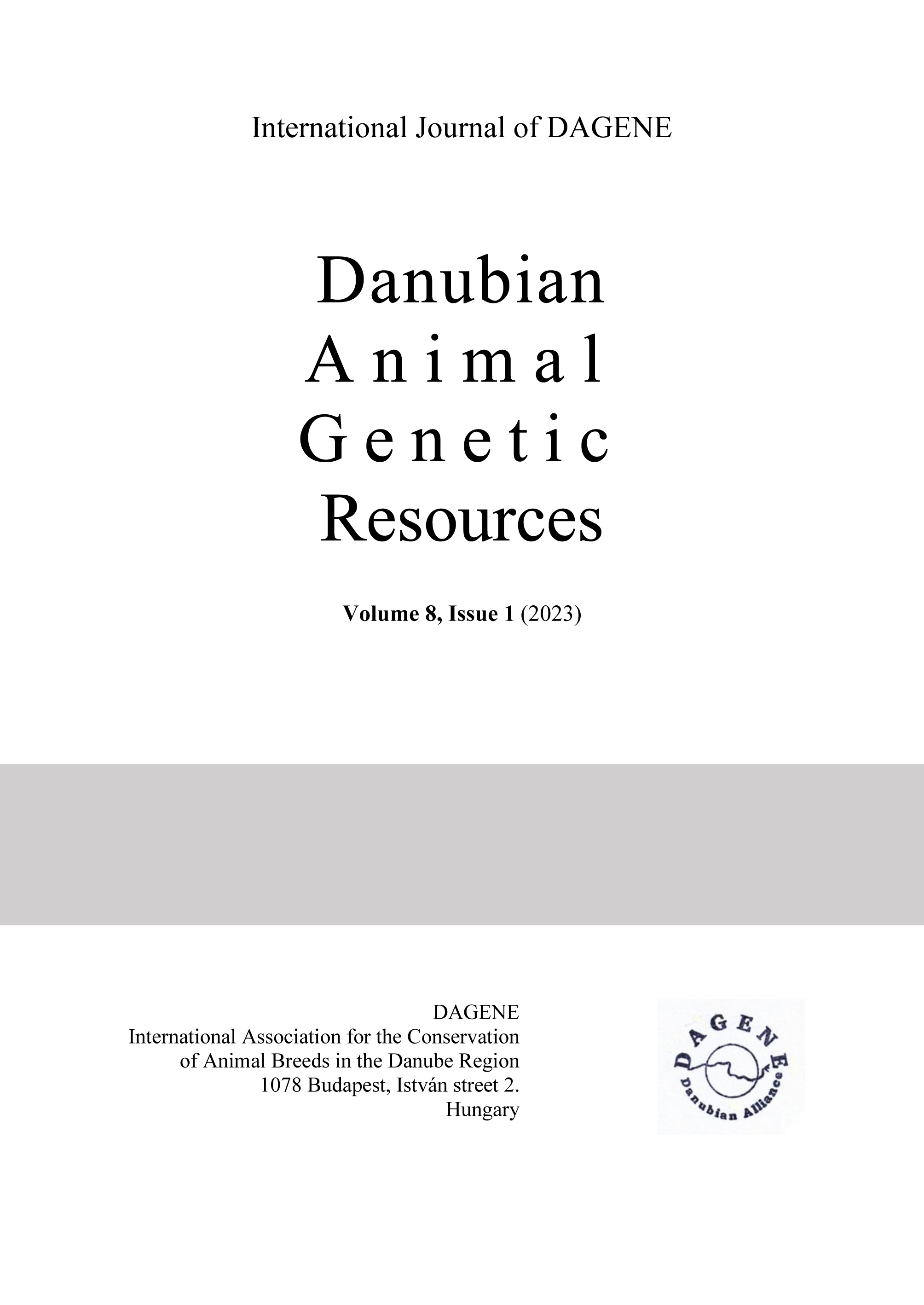Optimization of protocol for stallion semen cryopreservation
Abstract
The aim of the preliminary study was to improve success of cryopreservation of stallion spermatozoa. The effect of different equilibration lengths and two techniques for freezing of stallion semen was evaluated, based on motility and viability parameters. Fresh semen was diluted with BotuCrio extender and divided into 3 groups equilibrated for 0.5h, 2h, and 4h. Subsequently, half straws of each group were cryopreserved in the vapours of the liquid nitrogen or in the automatic freezer. Results of stallion spermatozoa motility and progressive motility showed decreasing trend with increased time of equilibration. Moreover, a significant difference (p < 0.05) for the percentage of spermatozoa producing ROS was found between semen frozen in the vapours of the liquid nitrogen compared to semen cryopreserved by the automatic freezer in the same equilibration time. Nevertheless, results of this study are of preliminary character. Experiments using higher number of individuals need to be tested in order to find the best procedure for semen cryopreservation of Slovak national horse breeds.
References
AMANN, R.P. – GRAHAM, J.K. (1992): Spermatozoal function, in: Mc Kinnon A. O., Voss J. L. Equine reproduction. Philadelphia: Lea & Febiger, 715–745.
AVANZI, B.R. – FARRÁS, M.C. – MELO, C. M. – ALVARENGA, M.A. - DELL’AQUA, J.A. – MEDEIROS, A.S.L. – ARAÚJO, G.H.M. – PAPA, F.O. (2006): Effciency of diferent cooling and storage systems for maintaining equine semen viability in a hot environment. Anim. Reprod. Sci., 94, 152–154. http://dx.doi.org/10.1016/j.anireprocsi.2006.03.042
BALL, B.A. (2008): Oxidative stress, osmotic stress and apoptosis: impacts on sperm function and preservation in the horse. Anim. Reprod. Sci., 107, 257–267. https://doi.org/10.1016/j.anireprosci.2008.04.014
BRITO, L.F.C. (2007): Evaluation of stallion sperm morphology. Clin. Tech. Equine Pract., 6, 249-264. https://doi.org/10.1053/j.ctep.2007.09.004
CHRENEK, P. – KUBOVICOVA, E. – MAKAREVICH, A. (2017): Current situation in the gene bank of animal genetic resources in Slovakia: a review. Slovak Journal of Animal Science, 50, 135–148.
DEVIREDDY, R.V. - SWANLUND, D.J. - OLIN, T. - VINCENTE, W. - TROEDSSON, M.H. - BISCHOF, J.C. - ROBERTS, K.P. (2002): Cryopreservation of equine sperm: optimal cooling rates in the presence and absence of cryoprotective agents determined using differential scanning calorimetry. Biol. Reprod., 66, 222–231. https://doi.org/10.1095/biolreprod66.1.222
DIETZ, J.P. – SERTICH, P.L., BOSTON, R.C. – BENSON, C.E. (2007): Comparison of ticarcillin and piperacillin in Kenney’s semen extender. Theriogenology, 68, 848-852. https://doi.org/10.1016%2Fj.theriogenology.2007.03.031
FORERO-GONZALEZ, R.A. – CELEGHINI, E.C.C. – RAPHAEL, C.F. - AN DRADE, A.F.C. – BRESSAN, F.F. - ARRUDA R.P. (2012): Effects of bovine sperm cryopreservation using different freezing techniques and cryoprotective agents on plasma, acrosomal and mitochondrial membranes. Andrologia, 44, 154–159. http://dx.doi.org/10.1111/j.1439-0272.2010.01154.x
HOFMANN, N. - OLDENHOF, H., - MORANDINI, C. - ROHN, K. - SIEME, H. (2011): Optimal concentrations of cryoprotective agents for semen from stallions that are classifed’ good or poor for freezing. Anim. Reprod. Sci. 125, 112–118. https://doi.org/10.1016/j.anireprosci.2011.03.001
NEILD, D.M. - GADELLA, B.M. - CHAVES, M.G. - MIRAGAYA, M.H. -COLENBRANDER, B. - AGUERO, A. (2003): Membrane changes during diferent stages of a freeze-thaw protocol for equine semen cryopreservation. Theriogenology 59, 1693–1705. https://doi.org/10.1016/s0093-691x(02)01231-1
ORTEGA-FERRUSOLA, C. - SOTILLO-GALAN, Y. - VARELA-FERNANDEZ, E. - GALLARDO-BOLANOS, J.M. - MURIEL, A. - GONZALEZ-FERNANDEZ, L. - TAPIA, J.A. - PENA, F.J. (2008): Detection of "apoptosis-like" changes during the cryopreservation process in equine sperm. J. Androl. 29, 213–221. https://doi.org/10.2164/jandrol.107.003640
PAGL, R. – AURICH, J.E. - MÜLLER-SCHLÖSSER, F. – KANKOFER, M. – AURICH, C. (2006): Comparison of an extender containing defined milk protein fractions with a skim milk-based extender for storage of equine semen at 5°C. Theriogenology 66, 1115-1122. https://doi.org/10.1016/j.theriogenology.2006.03.006
SALAMON, S. – MAXWELL, W.M. (2000): Storage of ram semen. Anim. Reprod. Sci. 62, 77-111. https://doi.org/10.1016/s0378-4320(00)00155-x
VAŠÍČEK, J. – BALÁŽI, A. – SVORADOVÁ, A. – VOZAF, J. – DUJÍČKOVÁ, L. – MAKAREVICH, A.V. – BAUER, M. – CHRENEK, P. (2022): Comprehensive flow-cytometric quality assessment of ram sperm intended for gene banking Using standard and novel fertility biomarkers. Int. J. Mol. Sci. 23, 5920. https://doi.org/10.3390/ijms23115920



